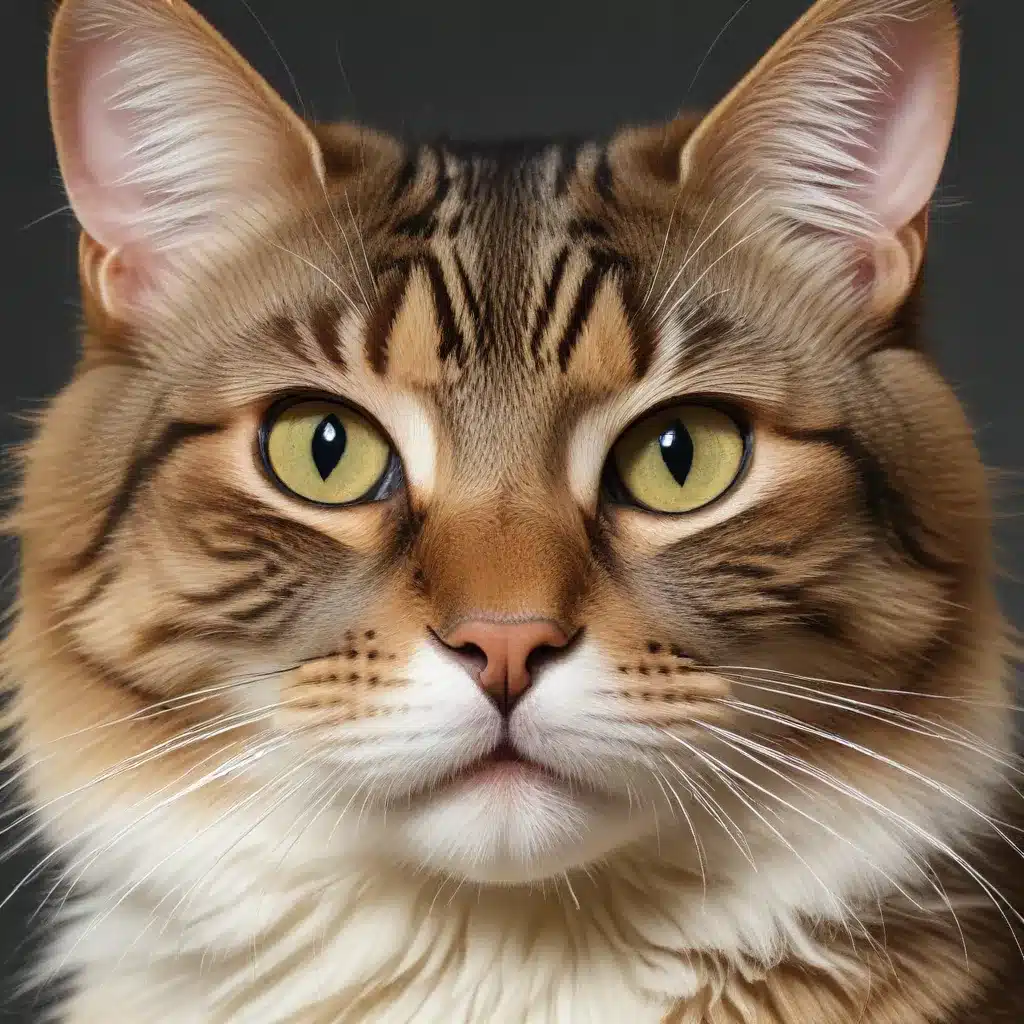
In the ever-evolving world of art, few subjects captivate the imagination quite like our feline companions. From the whimsical explorations of Louis Wain to the vibrant, surreal interpretations of modern artists, the humble cat has become a muse for those seeking to push the boundaries of creativity. As an art instructor at Pencil & Paint Muse, I’m thrilled to share with you the secrets behind crafting captivating cat illustrations that will enchant and delight your audience.
Feline Anatomy: Capturing Captivating Cats
The foundation of any successful cat illustration lies in a deep understanding of feline anatomy. Mastering the intricate details of a cat’s features, from their expressive eyes to their delicate whiskers, is crucial to imbuing your work with a sense of authenticity and life. Begin by closely observing the structure of a cat’s head, noting the placement and shape of their nose, ears, and jawline. Pay special attention to the nuanced expressions that can be achieved through subtle adjustments to these elements.
Equally important is the accurate depiction of a cat’s body, including their flexible spine, powerful haunches, and graceful paws. Capture the feline’s inherent agility and poise through dynamic poses that showcase their natural elegance. Experiment with different angles and perspectives to challenge your artistic skills and create truly captivating compositions.
Color and Composition: Bringing Cats to Life
Once you’ve nailed the anatomical foundations, it’s time to explore the realm of color and composition. Cats come in a diverse array of hues, from the regal elegance of a tuxedo cat to the vibrant splashes of a calico. Carefully curate your color palette to reflect the unique personality of your feline subject, whether it’s the rich, velvety tones of a Maine Coon or the delicate pastels of a Siamese.
Equally important is the arrangement of your composition. Strategically place your cat subject within the frame to create a sense of balance and visual interest. Consider the use of negative space to allow your feline to take center stage, or experiment with asymmetrical layouts to add a touch of dynamism to your work.
Digital Illustration: Mastering the Medium
In the digital age, cat illustrations have found a new canvas to thrive upon. Leveraging the power of vector graphics, you can create clean, scalable designs that are perfect for online platforms and print media. Explore the versatility of Adobe Illustrator or Procreate to blend traditional and digital techniques, seamlessly incorporating hand-drawn elements with the precision of digital tools.
When working in the digital realm, pay close attention to optimizing your illustrations for various online formats. Consider the unique dimensions and viewing experiences of social media platforms, e-commerce sites, and digital galleries. By tailoring your work to these diverse mediums, you’ll ensure your captivating cat illustrations reach the widest possible audience.
Traditional Art: Embracing the Classics
While digital illustration has undoubtedly revolutionized the world of cat art, there’s still a place for the timeless appeal of traditional media. Sketching your feline subjects using pencils, charcoal, or ink can capture the spontaneity and expressiveness of their movements. Experiment with hatching, cross-hatching, and tonal range to create depth and dimension in your drawings.
When it comes to painting, consider the versatility of acrylic, oil, or watercolor to bring your cats to life on the canvas. Techniques like blocking in, wet-on-wet, and impasto can lend a unique textural quality to your work, evoking the plush, tactile nature of a cat’s fur. Embrace the spontaneity of traditional media, allowing happy accidents and serendipitous discoveries to shape the final outcome of your masterpiece.
Storytelling with Cats: Capturing Feline Narratives
Beyond the technical mastery of feline illustration, the true power of your art lies in its ability to captivate and engage your audience. Develop narrative concepts that tap into the endearing quirks and intriguing mysteries of our feline friends. Craft emotive character designs that convey a range of emotions, from the playful mischief of a kitten to the regal composure of a senior cat.
By imbuing your illustrations with a sense of story, you invite viewers to weave their own tales and forge a deeper connection with your work. Consider incorporating subtle visual cues or whimsical settings that spark the imagination and encourage your audience to immerse themselves in the world you’ve created.
Marketing Your Cat Illustrations: Amplifying Your Reach
As you hone your skills and develop a unique artistic voice, it’s crucial to cultivate an online presence that showcases your captivating cat illustrations. Utilize platforms like Pencil & Paint Muse to build a digital portfolio, engage with a community of like-minded artists, and promote your commission opportunities.
Leveraging the power of social media, you can share your creative process, highlight your latest works, and engage with your audience. Platforms like Instagram, Twitter, and TikTok offer a wealth of opportunities to showcase your feline-inspired art and connect with potential clients and admirers.
Remember, the world of cat art is not only a source of creative expression but also a thriving industry. By thoughtfully marketing your work and monetizing your talents, you can turn your passion for feline illustration into a rewarding and sustainable creative endeavor.
In the ever-evolving world of art, cats continue to captivate and inspire. From the pioneering work of Louis Wain to the modern-day digital marvels, the feline form has proven to be an endlessly fascinating subject for artists of all styles and mediums. By mastering the technical aspects of cat illustration, embracing the power of storytelling, and strategically marketing your work, you can create captivating cat art that resonates with audiences around the world. So, sharpen your pencils, mix your paints, and let your imagination soar – the wonders of the feline realm await your creative touch.